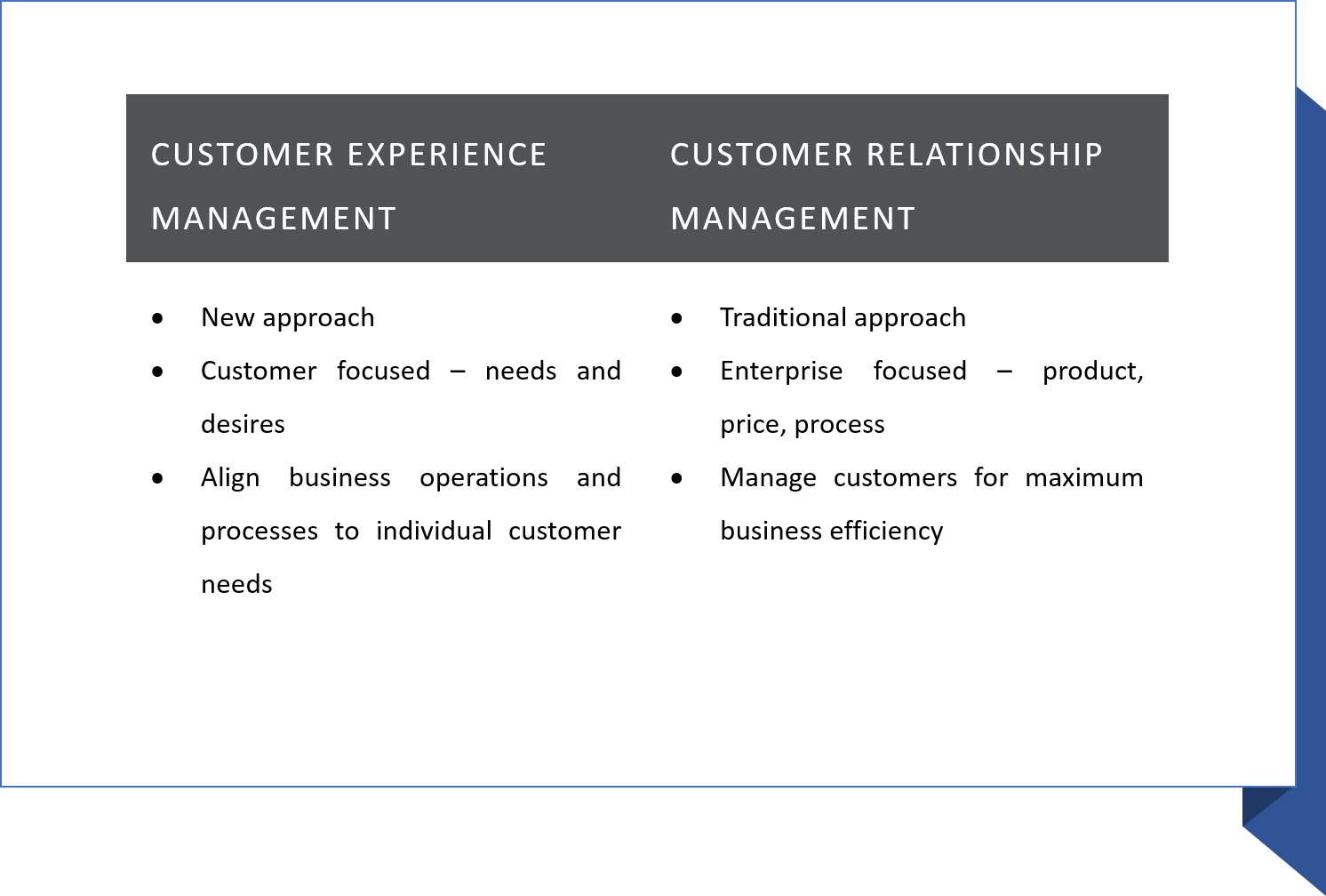Lecturer Broadcast
Click here to view an explanation about customer experience management.
Klik hier om na ‘n verduideliking van kliënte-ervaringsbestuur te luister.
Explanation by lecturer Johan Kleingeld from Edge Consulting, an expert on customer service.
Customers receive some kind of experience, ranging from positive to negative, during the course of buying goods and services. As such, a supplier cannot avoid creating an experience every time it interacts with a customer.
It has been shown that customers' perception of an organisation are developed as a result of their interaction across multiple-channels, not through one channel only, and that a positive customer experience can result in increased share of wallet and repeat business.
Loyalty is now driven primarily by a company's interaction with its customers and how well it delivers on their wants and needs. -Jessica Debor
The goal of customer experience management (CEM) is to move customers from satisfied to loyal and then from loyal to advocate.
The concept of customer experience was first introduced by Pine and Gilmore in their 1998 Harvard Business Review article. They believed that successful businesses influence people through engaging, authentic experiences, that render personal value (Pine and Gilmore 1998).
According to Bernd Schmitt, "the term 'Customer Experience Management' represents the discipline, methodology and/or process used to comprehensively manage a customer's cross-channel exposure, interaction and transaction with a company, product, brand or service."
Customer experience solutions provide strategies, process models, and information technology to design, manage, and optimize the end-to-end customer experience process.
Traditionally, managing the customer relationship has been the domain of Customer Relationship Management (CRM). However, CRM strategies and solutions are designed to focus on product, price and enterprise process, with minimal or no focus on customer need and desire. The result is a sharp mismatch between the organisation’s approach to customer expectations and what customers actually want, resulting in the failure of many CRM implementations.

Note that, although CRM is the more traditional approach, one cannot ignore the basic focus on product, price and process. It should rather be used in partnership with the more modern CEM approach, i.e. first focus internally (CRM) and then on external (CEM). Through the customer relation journey, there must be constant interaction between CRM and CEM processes.
CEM Systems
Building great consumer experiences are a complex enterprise, involving strategy, integration of technology, orchestrating business models, brand management and CEO commitment.
The key feature of successful CEM implementations is the ability to manage multi-channel interactions. Customer experience solutions address:
- the cross-channel (contact centre, Internet, self-service, mobile devices, brick-and-mortar stores),
- cross-touch point (phone, chat, email, Web, in-person),
- cross-lifecycle (ordering, fulfilment, billing, support, etc.) nature of the customer experience process.
Experience-based providers also integrate both internal and external innovations to create end-to-end customer experiences. They evaluate their business models as well as business support systems and operational support systems (BSS/OSS) from the customer’s point of view to achieve the level of customer-centricity necessary to improve customer loyalty, churn and revenue (Lopez, 2007).
Click here to watch a video about customer service Vs. customer experience.
Click here to watch a video about the four steps for creating a culture of customer service excellence.